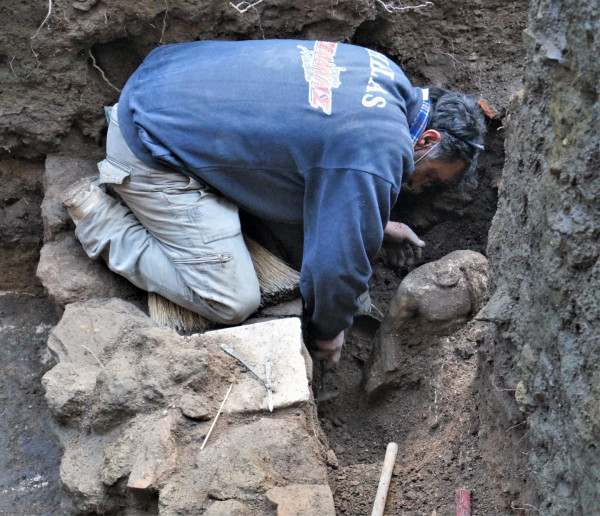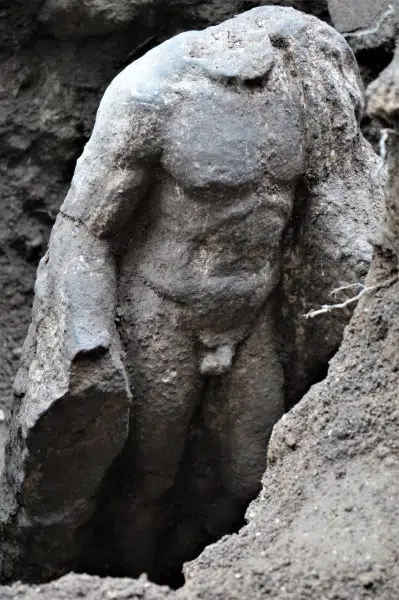
An unfinished Roman-era statue made of marble was unearthed in an excavation in Veria recently, according to a statement issued by the Greek Ministry of Culture on Wednesday.
The statue, which does not have a head, is three-fifths life size; at this point it is unknown who it depicts, although traditionally the only unclothed figures in Greek statuary are of gods or athletes.
The spectacular find, taking place almost at the end of the year, occurred in the center of the Ancient Greek city of Veria, in the heart of Macedonia, very close to the archaeological site of Agios Patapios.
Statue remarkable for its state of incompleteness
The discovery was made as a result of excavation under the auspices of the Ephorate of Antiquities of Imathia, in one of the few pieces of land in the city that had no buildings on it. The statue was unearthed on Friday, December 17.
The statue, which stands almost one meter tall, dates back to imperial times, when Veria, as the seat of the Macedonian Commonwealth, was the first city of Macedonia. It served as the center of political and cultural developments in the region and at the same time was an axis of cohesion and a point of reference for all ancient Macedonian traditions.

With a cloak thrown around his left shoulder and wrapped around his arm, the statue of a young man with an athletic body is seen emerging from a mass of marble, recalling the classic patterns and images of statues related to Apollo or Hermes.
It is the work of a very skilled craftsman who, for whatever reason, never finished the piece. The sculptor, although he had advanced far in the creation of his sculpture, had reached a point almost at the final stage when he apparently decided to abandon the effort, unfinished.
This fact makes the discovery of the statue even more significant, however, since it gives art historians an opportunity to study not only the style, but the production techniques of these types of artworks.
The statue may have been meant as an exact copy or a freer recreation of a famous original; either way, it can help researchers understand the Veroia school of sculpture from a completely different point of view.
Its typical sculptural forms, which had particularly recognizable features already in the Hellenistic period, reached their apogee at the time of the greatest prosperity of the city, when the Antoninians and the “Philalexandrian” Severus reigned at the end of the second and beginning of the third century AD.
Excavations at the plot are continuing, according to the statement by the Greek Ministry of Culture.
See all the latest news from Greece and the world at Greekreporter.com. Contact our newsroom to report an update or send your story, photos and videos. Follow GR on Google News and subscribe here to our daily email!



